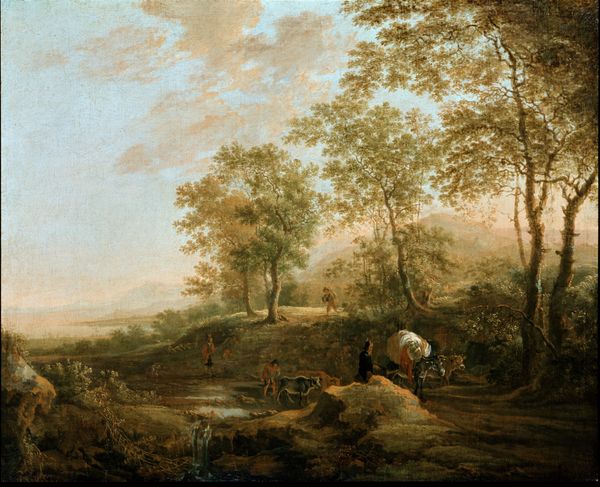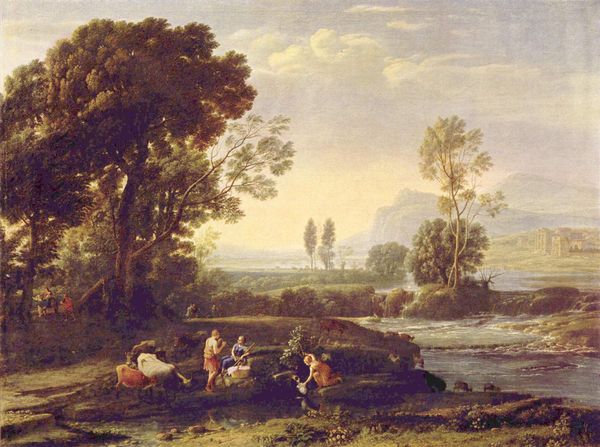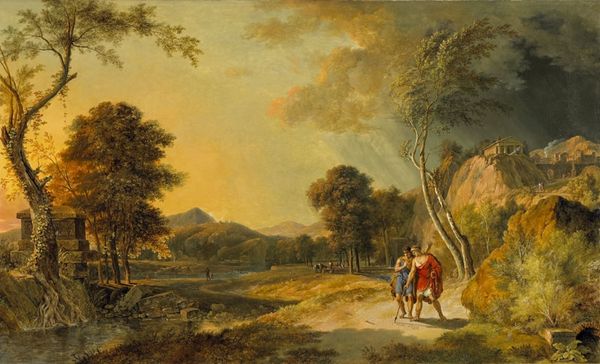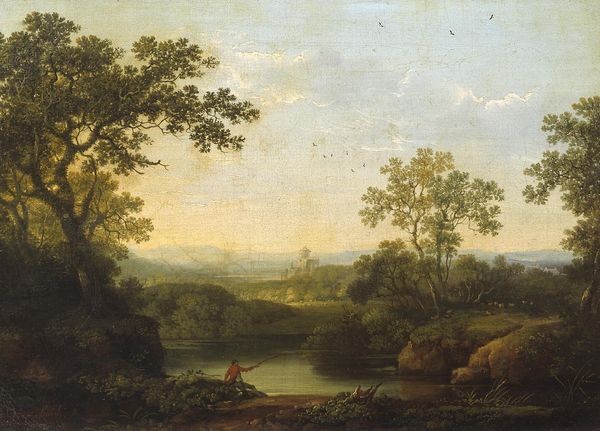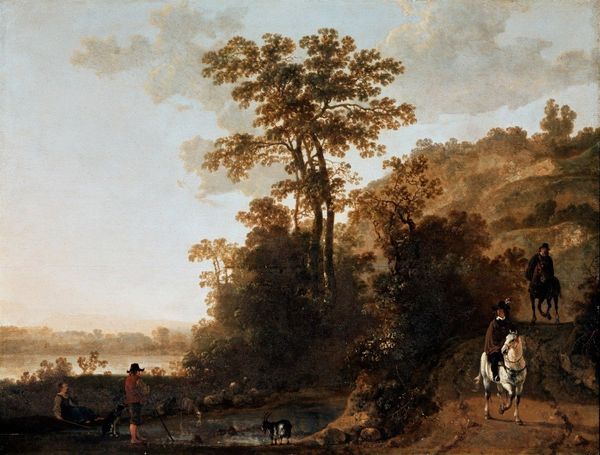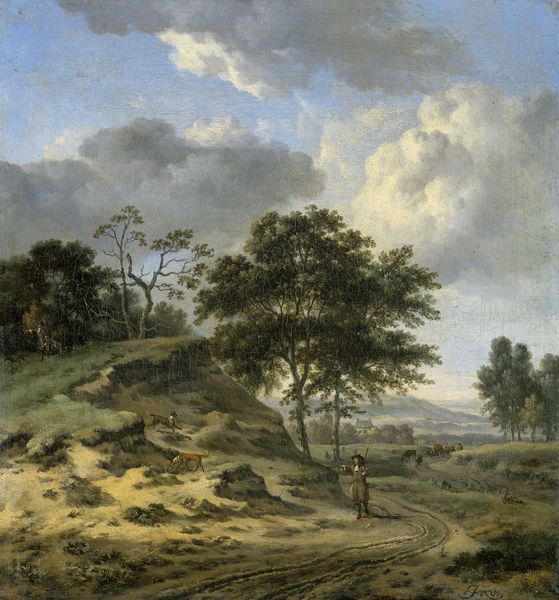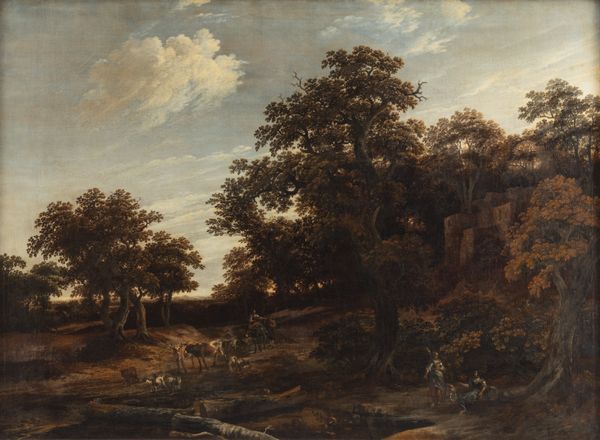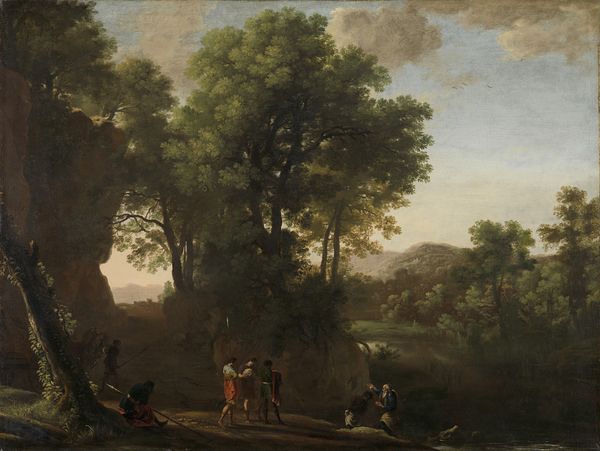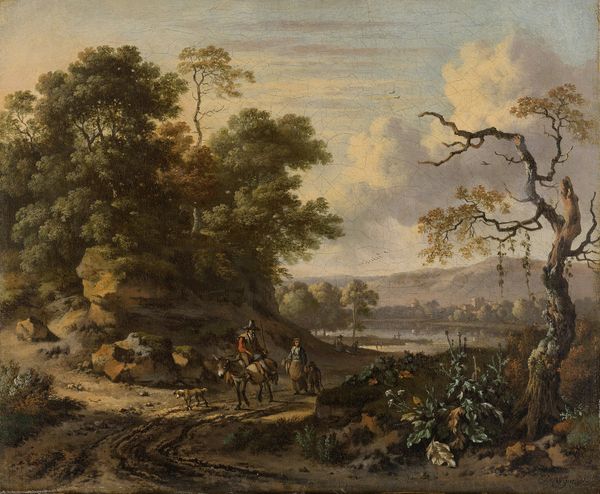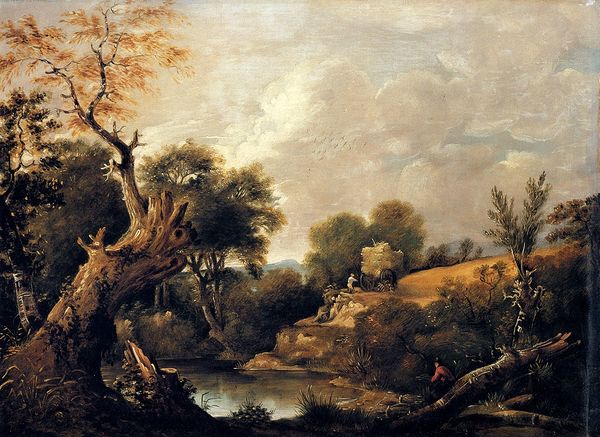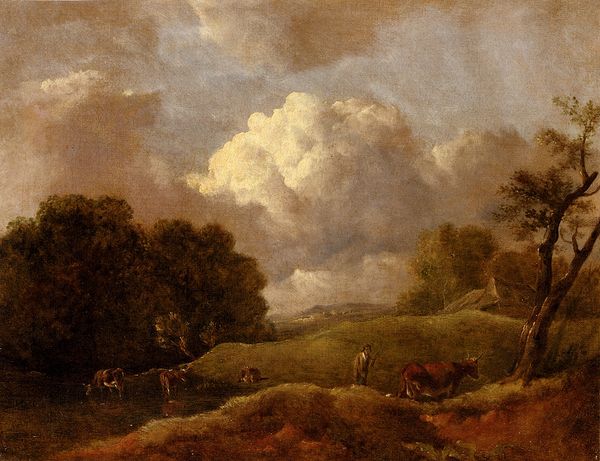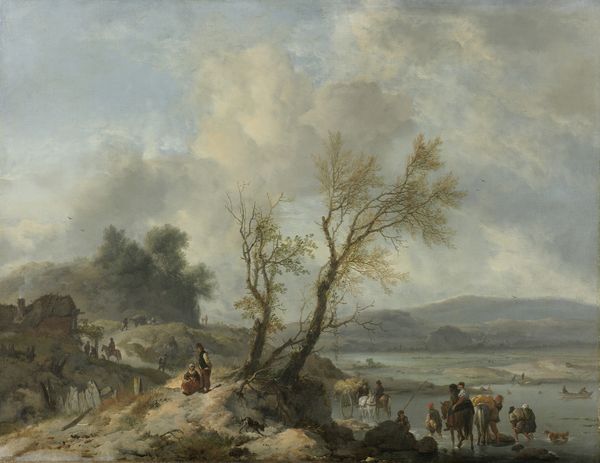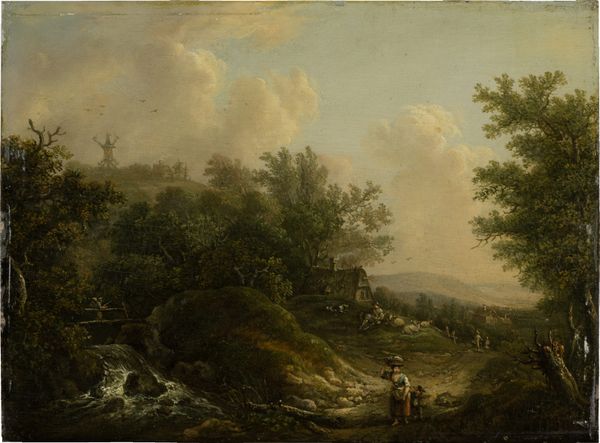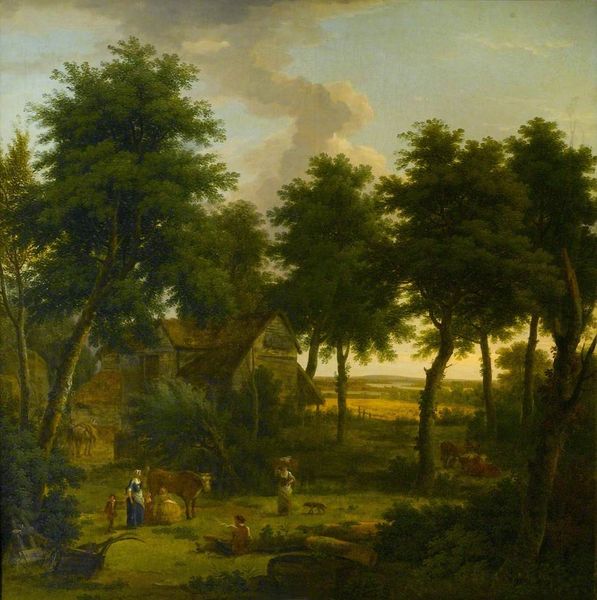
painting, oil-paint
#
baroque
#
dutch-golden-age
#
painting
#
oil-paint
#
landscape
#
oil painting
#
horse
#
genre-painting
#
realism
Dimensions: height 23.5 cm, width 30.5 cm, depth 5 cm
Copyright: Rijks Museum: Open Domain
Editor: Here we have Jan Wijnants's "Landscape with a Rider Watering his Horse," painted sometime between 1655 and 1684. It's an oil painting and immediately gives me this serene feeling, almost pastoral. How do you interpret this work, particularly considering its historical context? Curator: That pastoral feel is key. These Dutch Golden Age landscapes, seemingly benign, are anything but neutral. Who owned land? Who could travel through it, and under what conditions? Think about the power dynamics inherent in depicting leisurely riders against, perhaps, laborers. Does Wijnants challenge or reinforce existing hierarchies? Editor: I hadn't considered it that way. I was focused on the tranquility, the skill in capturing light. Curator: Exactly, the masterful technique serves a purpose. By portraying an idealized version of the landscape, Wijnants might be subtly commenting on Dutch prosperity, perhaps even glossing over some uncomfortable truths about wealth accumulation through colonization and trade. Look at the figures; how does their depiction interact with the land itself? Editor: They seem very small, almost secondary to the landscape. Curator: Right. Could this diminishment also be symbolic, suggesting their limited agency, or perhaps even pointing at their place within a rigid social hierarchy reflected through land ownership? How can we decode the social commentary embedded within such 'realistic' details? Editor: It is really fascinating how something that appears so calm on the surface can actually be prompting questions about society and class. Thank you. Curator: And thank you for bringing fresh eyes. Considering art through a critical lens helps us understand not only the past, but also the biases that shape our present.
Comments
No comments
Be the first to comment and join the conversation on the ultimate creative platform.
